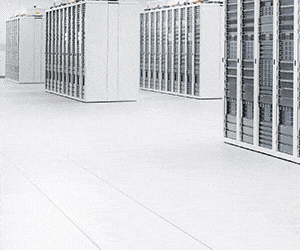Healthcare’s Focus on Efficiency, Data and Cybersecurity
Amid financial and workforce constraints, healthcare organizations cannot allow processes and technologies to stagnate just because they’ve historically met their needs. As emerging technologies such as generative artificial intelligence and automation become more widespread, organizations must move at pace so that they can achieve their strategic missions and maintain a competitive edge.
Ultimately, organizationwide efficiency should be top of mind. That includes efficiency for clinicians, patients and all other departments.
For clinicians, achieving efficiency may require electronic health record (EHR) system optimization, integrated virtual care workflows or app rationalization. How can clinical teams access critical apps without multiple logins or clicks? How can nurses work at the top of their licenses instead of getting bogged down in administrative duties?
Patients are also expecting efficiency. How can they connect with their physicians while also experiencing high-quality bedside care? Can they make appointments, pay bills and access radiology or lab results on their smartphones? How seamless is their digital connection to the health system?
And all other departments, such as IT, finance and environmental services, are also joining the push for efficiency. How do remote work and automation fit in? What trainings or certifications would entice staff to stay at an organization? How can the organization ensure a diverse and inclusive workforce now that the hiring pool extends beyond the local community?
READ MORE: Health systems are taking innovation into their own hands.
Healthcare CIOs who are successful in retaining their staff and reducing burnout focus heavily on culture. Culture can’t be bought; it must be developed. These top leaders are doing everything from offering career growth opportunities to fostering collaboration and prioritizing overall wellness. They’re connecting the mind to the heart.
In order to support the drive for efficiency, healthcare organizations must understand the value of data and analytics. As healthcare organizations continue to compete for patients, they recognize that information is the key: Healthcare organizations that can act on the vast amount of data they’re collecting in their EHRs, enterprise resource planning platforms or other ancillary clinical systems can edge out their competitors.
Finally, healthcare organizations must be able to protect their efficiency and data processes with robust security programs. Data privacy is paramount, as are these three connected areas:
- At the top of every health system’s security priorities should be a plan to minimize downtime when a cyber event happens. Evaluate downtime policies, procedures and workflow across the organization. This can’t be limited to the IT team; it must also include clinical and administrative teams.
- Understand your ecosystem holistically, especially in terms of connected medical devices. When connected medical devices are overseen by the biomed team, make sure that there are close collaborations to ensure security. Connected insulin pumps and monitors have security considerations just like laptops and servers.
- As healthcare organizations move into the cloud, they must understand what security it provides and tighten their third-party risk management. Understanding a partner’s security strategy and program is key when evaluating a cloud service provider.
Healthcare leaders understand now that innovation is not a side quest focused on shiny, new tech. It’s about understanding their strategic missions and transforming processes and culture. Innovation is a competitive advantage.
This article is part of HealthTech’s MonITor blog series.












